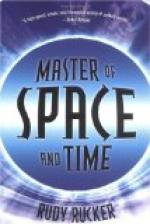It was in 1791 that Samuel Morse was born. Samuel Finley Breese Morse was the entire name with which he was endowed by his parents. He came from the sturdiest of Puritan stock, his father being of English and his mother of Scotch descent. His father was an eminent divine, and also notable as a geographer, being the author of the first American geography of importance. His mother also was possessed of unusual talent and force. It is interesting to note that Samuel Morse first saw the light in Charlestown, Massachusetts, at the foot of Breed’s Hill, but little more than a mile from the birthplace of Benjamin Franklin. He came into the world about a year after Franklin died. It is interesting to believe that some of the practical talent of America’s first great electrician in some way descended to Samuel Morse.
He received an unusual education. At the age of seven he was sent to a school at Andover, Massachusetts, to prepare him for Phillips Academy. At the academy he was prepared for Yale College, which he entered when fifteen years of age. With the knowledge of science so small at the time, collegiate instruction in such subjects was naturally meager in the extreme. Jeremiah Day was then professor of natural philosophy at Yale, and was probably America’s ablest teacher of the subject. His lectures upon electricity and the experiments with which he illustrated them aroused the interest of Morse, as we learn from the letters he wrote to his parents at this time.
One principle in particular impressed Morse. This was that “if the electric circuit be interrupted at any place the fluid will become visible, and when it passes it will leave an impression upon any intermediate body.” Thus was it stated in the text-book in use at Yale at that time. More than a score of years after the telegraph had been achieved Morse wrote:
The fact that the presence of electricity can be made visible in any desired part of the circuit was the crude seed which took root in my mind, and grew into form, and ripened into the invention of the telegraph.
We shall later hear of the occasion which recalled this bit of information to Morse’s mind.
But though Yale College was at that time a center of scientific activity, and Morse showed more than a little interest in electricity and chemistry, his major interest remained art. He eagerly looked forward to graduation that he might devote his entire time to the study of painting. It is significant of the tolerance and breadth of vision of his parents that they apparently put no bars in the path of this ambition, though they had sacrificed to give him the best of collegiate trainings that he might fit himself for the ministry, medicine, or the law. As a boy of fifteen Samuel Morse had painted water-colors that attracted attention, and he was possessed of enough talent to paint miniatures while at Yale which were salable at five dollars apiece, and so aided in defraying his college expenses.




